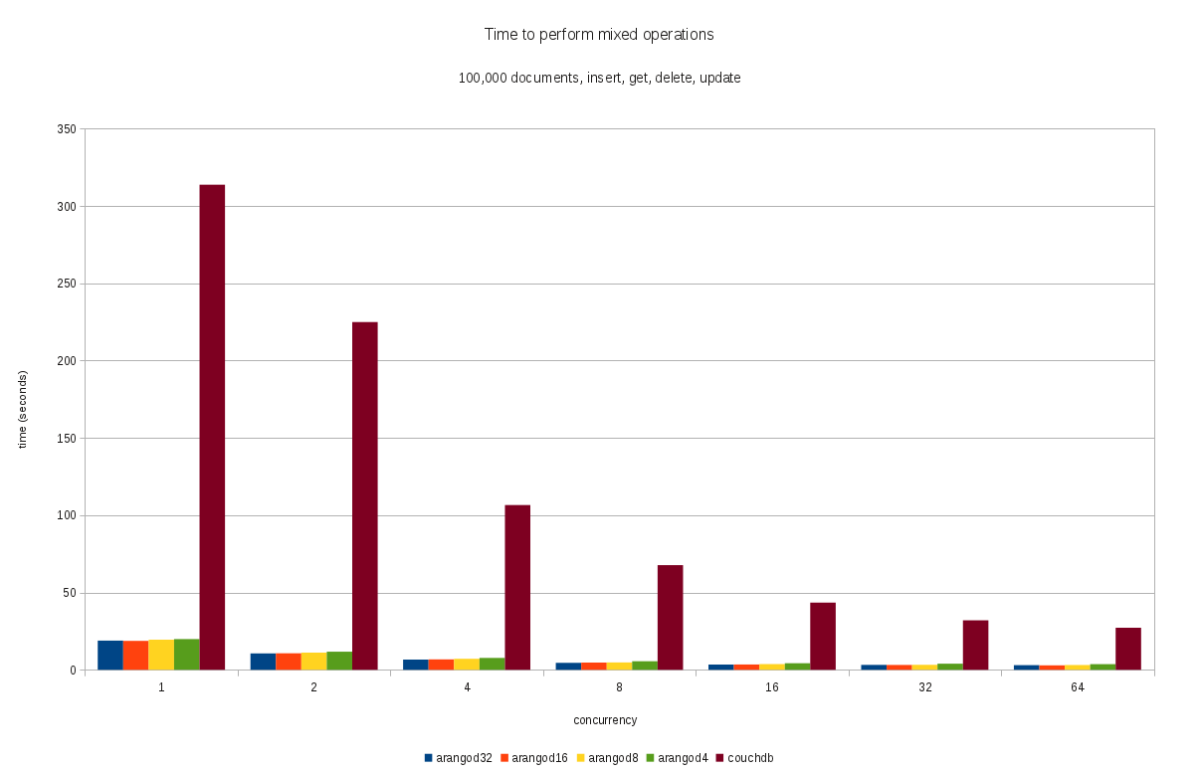Get 20% Off: NoSQL Matters Barcelona | ArangoDB 2012
We are on the road again and are invited to give a talk at the “nosql matters” in Barcelona. This is a one day conference in an amazing looking venue (UNESCO world heritage).
Now the conference team offered us a couple of promo codes for “nosql matters” on October, 6th. Katja, one of the organizers, writes:
“there might be some friends, colleagues, contacts or even your followers on twitter who are interested in hearing your talk at NoSQL matters Barcelona. Therefore we would like to give them the opportunity to buy price reduced tickets. With the promotion code BCNSchoenert_7959 you can give 5 of them the chance to buy a ticket with 20% discount.”
So, here we are. Grap the code and get your ticket. We are looking forward to meeting you in Spain.
Bulk Inserts Comparison: MongoDB, CouchDB, ArangoDB ’12
In the last couple of posts, we have been looking at ArangoDB’s insert performance when using individual document insert, delete, and update operations. This time we’ll be looking at batched inserts. To have some reference, we’ll compare the results of ArangoDB to what can be achieved with CouchDB and MongoDB.
(more…)
ArangoDB 2012: Additional Results for Mixed Workload
In a comment to the last post, there was a request to conduct some benchmarks with a mixed workload that does not test insert/delete/update/get operations in isolation but when they work together.
To do this, I put together a quick benchmark that inserts 10,000 documents, and after each insert either
- directly fetches the inserted document (i.e. insert / get),
- updates the inserted documents and retrieves it (i.e. insert / update / get), or
- deletes it (i.e. insert / delete)
The three cases are alternated deterministically, meaning each case occurs with the same frequency and in the same order. It’s probably still not the best ever test case, but at least it reflects a mixed read and write workload.
The document ids used in the test were monotically increasing integers, starting from some base value. That means no random values were used.
The test was repeated for 100,000 documents as well. The dataset still fully fits in RAM. The tests were run in the same environment as the previous tests so one can compare them.
The results are in line with the results shown in the previous post. Here’s the chart with the results of the 10,000 documents benchmark:

And here are the tests result for the 100,000 documents benchmark:

ArangoDB Collection Disk Usage Analysis | ArangoDB 2012
In this post we’ll explain how ArangoDB stores collection data on disk and look at its storage space requirements, compared to other popular NoSQL databases such as CouchDB and MongoDB.
How ArangoDB allocates disk space
ArangoDB stores documents in collections. The collection data is persisted on disk so it does not get lost in case of a server restart.
(more…)
AvocadoDB Becomes ArangoDB | ArangoDB Blog 2012
Hi folks,
to avoid legal issues with some other Avocado lovers we have to change the name of our database. We want to stick to Avocados and selected a variety from Mexico/Guatemala called “Arango”.
(more…)
Using mruby as Alternative: Server-Side | ArangoDB Blog 2012
Introduction
One of the design goals of AvocadoDB is:
Use AvocadoDB as an application server and fuse your application and database together for maximal throughput (more…)
Tutorial for AvocadoDB PHP API Published | ArangoDB Blog 2012
Hey there, short notice: Jan has written a tutorial on how to use the PHP API for AvocadoDB (note: this is “just” the API for the REST interface, it does not cover yet the upcoming query language). You can find both the
PHP API and the tutorial on Github. We are making progress with other languages as well… but that’s something for another blog post (cliffhanger 😉 ).
Hilbert Curves & Polyhedrons for Geo-Indexing | ArangoDB Blog 2012
Cambridge mathematician Richard R. Parker presents a novel algorithm he has developed using a Hilbert curve and Polyhedrons to efficiently implement geo-indexing.
AvocadoDB: The Best NoSQL Database | ArangoDB Blog 2012
Our mission: projects are different, project requirements change. We want to offer with AvocadoDB a most universally applicable nosql database which can be used in a maximum number of different use cases. In buzzword bingo language: we want to become the MySql in nosql – without MySql’s annoyances of course ;-).
Hello World! Introduction to ArangoDB | ArangoDB Blog 2012
We’ll use this space for further information on what’s going on in the project, milestones, events, interesting in-depth information etc.
- « Previous
- 1
- …
- 23
- 24
- 25
Get the latest tutorials,
blog posts and news:
Thanks for subscribing! Please check your email for further instructions.
 Skip to content
Skip to content 